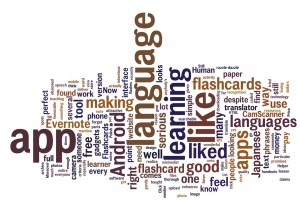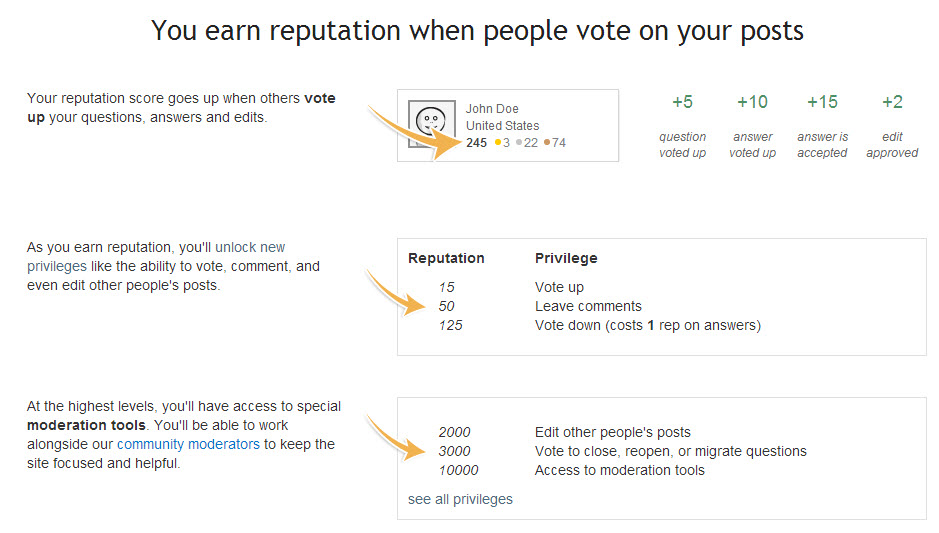Although the first meetings made it clear that we aimed to create an educational application we still hadn’t decided the subject area and how it would differ from the others out there.
In the very first meeting one of the group members referred to an application that was mentioned in class as well, Duolingo. Duolingo is a mobile application focused on language learning. As we all started to search around for educational applications Duolingo was one of the first to check. Checking the area a bit more made us decide that the “Foreign Languages” sector was well-suited for our application, as language learning involves much more than just quizzes and exercises. It includes vocabulary, grammar, speaking, listening and so much more! There was an opportunity there, so we decided to take it!

The one thing still being considered was the audience that we’re addressed at. Well language learning from our experience is usually a skill developed from the early years at school and it is likely to stop after someone gets a job. So we decided that we should make this application for all types of students aiming more at the high school ones, who are probably in the middle process, having already started to learn a language and not having perfected it yet. The goal from the beginning though, was to make an application that could help in the chosen subject area, whilst in class. In that sense teachers should also be included in our target audience perhaps with a different approach for using the app in order to distinguish their different role in it.
But, all these premise that we have defined what our application is about. And that was not something so clear at that point. Our research around language learning applications already in wide use -check our Research category posts for a more detailed overview- proved that there was a feature missing from most of them!
Videos!!!
The most common ways for learning a language through applications are through mini exercises, by repeating words and sentences and by translating from one language to another. The absence of live conversations was something that triggered us for making an application that would provide the possibility to upload videos with real conversations in foreign languages by users. In this way people could watch videos in a specified category, e.g food, to learn expressions about how to order food in Spanish or French. By adding an extra feature of adding captions in the videos with the translation of the whole conversation from e.g. Spanish to English, the ones watching the video could have an overview of how something is formulated.
In our minds engaging in the activity of making videos with friends in order to practice a foreign language could be something fun and constructive at the same time! Moreover people could practice that one skill that always seems to be a little harder to practice when learning a new language, Speaking!

And all that, while improving their understanding of real-life conversations! Videos could be uploaded either by native speakers of a language in order to help others learn their language and or by users that are learning a language in order to get feedback from others.
That could work well by adding a feature where the users could add comments and rating on the uploaded videos. Through the comments, native users could give instructions on how to say something in a more appropriate way perhaps and by giving a rating to the video on specific sectors like on how good was the use of the grammar, the vocabulary and the pronunciation, videos could have an overall rating that would be an indication for other users on how much helpful that video could be for them. Another feature worth adding was tags not only concerning the content of the videos but also one for the accent! When native users make a video in their language they could add their accent, as a guide for users that may want to know more Scottish English for instance since they plan to visit Scotland, or as an indication for novice users that English in this video may sound a bit harder to them so they should probably look for another one.
A separation not yet made was about the kinds of users. Since we were looking for an app that could be used a teaching tool in class teachers should be able to hold a significant role in the application. That’s why we thought that when users sign up, they could, when signing in as teachers, create private groups where they could upload videos for their students to watch and ask them to upload ones as an exercise in order to engage them into working together to make videos relevant to that day’s lesson. By doing that we figured out that by attracting teachers to use our application, we would actually attract more users to our application, in the sense of that if they got their students to involve into the video making for school purposes, if they liked it they would probably engage into the whole process independently even at home afterwards. The good thing about making private groups for interaction could be that teachers have access to the video content uploaded and that could be utilized as a way of controlling the quality (i.e. not including swearing) of the videos uploaded.
Another thing that could augment the involvement that users have with the application could be a feature of having some kind of a reputation system, what actually came into our minds when thinking about this was the way that users take points when adding content in Stack Overflow. The way that system works, actually makes all users equal when starting, and it’s their positive contribution that actually makes them more respectable members of the community. By that as they become more reputable they have more rights in the way they can use the site. For instance when starting someone cannot post comments until he has a certain amount of points. That stops the novice and perhaps ignorant users from posting non helpful stuff on the site. On the other hand, highly rated members can actually even delete questions posted when it is thought that they are duplicated or down vote questions that show no actual effort. Moreover the content that is actually found useful and is voted up is always shown first, so people have access to the most helpful and relevant content at the same time when searching for something. So, if we managed to implement a system similar to this one, the content of the site could be kept clean, since people could report bad videos and furthermore videos posted by users with high reputation would be an indication for people searching the videos about how good the quality of it would be.

How the Reputation system works in Stack Overflow
A problem arising from all this was the initial content of the application. Meaning that there would be no videos, so all the users should start making ones, as there would be no material. But history has proved that in terms of using these kind of apps 90% of the users tends to watch the material already available, 9% interacts in terms of adding comments etc and only 1% -the brave ones- actually contribute to the site by adding content. This led us thinking of ways that some initial content would be added in the first place probably by us, in some way to guide people how to do it and to show that it can be easy and fun, or by asking teachers to contribute more content in the beginning.

That still has not been clearly decided as it is firstly important to think of the whole structure of the application before getting into the content. Along with this though, there will be investigated some of the aspects that our application will be trying to promote, which are no other than learning through visual and audio representations, by getting help from native speakers, by overcoming psychological factors as the Speaking issue or by just keeping in touch with a language learned but left unpracticed for a while. Keep track of our next posts that will try to research a little bit more how these things could be supported through our application!
So let’s summarize what is the exact idea of our application:
A collaborative mobile language learning application that is based on video making from its users, which introduces a way to share conversations in different languages, accents, dialects and themes, where people can comment, offer support and suggestions, while enhancing their own knowledge, acquiring new skills and experience.
What’s left to be considered is a name for it, so that we can start actually designing it!
Project Brief
Although the first meetings made it clear that we aimed to create an educational application we still hadn’t decided the subject area and how it would differ from the others out there.
In the very first meeting one of the group members referred to an application that was mentioned in class as well, Duolingo. Duolingo is a mobile application focused on language learning. As we all started to search around for educational applications Duolingo was one of the first to check. Checking the area a bit more made us decide that the “Foreign Languages” sector was well-suited for our application, as language learning involves much more than just quizzes and exercises. It includes vocabulary, grammar, speaking, listening and so much more! There was an opportunity there, so we decided to take it!
The one thing still being considered was the audience that we’re addressed at. Well language learning from our experience is usually a skill developed from the early years at school and it is likely to stop after someone gets a job. So we decided that we should make this application for all types of students aiming more at the high school ones, who are probably in the middle process, having already started to learn a language and not having perfected it yet. The goal from the beginning though, was to make an application that could help in the chosen subject area, whilst in class. In that sense teachers should also be included in our target audience perhaps with a different approach for using the app in order to distinguish their different role in it.
But, all these premise that we have defined what our application is about. And that was not something so clear at that point. Our research around language learning applications already in wide use -check our Research category posts for a more detailed overview- proved that there was a feature missing from most of them!
Videos!!!
The most common ways for learning a language through applications are through mini exercises, by repeating words and sentences and by translating from one language to another. The absence of live conversations was something that triggered us for making an application that would provide the possibility to upload videos with real conversations in foreign languages by users. In this way people could watch videos in a specified category, e.g food, to learn expressions about how to order food in Spanish or French. By adding an extra feature of adding captions in the videos with the translation of the whole conversation from e.g. Spanish to English, the ones watching the video could have an overview of how something is formulated.
In our minds engaging in the activity of making videos with friends in order to practice a foreign language could be something fun and constructive at the same time! Moreover people could practice that one skill that always seems to be a little harder to practice when learning a new language, Speaking!
And all that, while improving their understanding of real-life conversations! Videos could be uploaded either by native speakers of a language in order to help others learn their language and or by users that are learning a language in order to get feedback from others.
That could work well by adding a feature where the users could add comments and rating on the uploaded videos. Through the comments, native users could give instructions on how to say something in a more appropriate way perhaps and by giving a rating to the video on specific sectors like on how good was the use of the grammar, the vocabulary and the pronunciation, videos could have an overall rating that would be an indication for other users on how much helpful that video could be for them. Another feature worth adding was tags not only concerning the content of the videos but also one for the accent! When native users make a video in their language they could add their accent, as a guide for users that may want to know more Scottish English for instance since they plan to visit Scotland, or as an indication for novice users that English in this video may sound a bit harder to them so they should probably look for another one.
A separation not yet made was about the kinds of users. Since we were looking for an app that could be used a teaching tool in class teachers should be able to hold a significant role in the application. That’s why we thought that when users sign up, they could, when signing in as teachers, create private groups where they could upload videos for their students to watch and ask them to upload ones as an exercise in order to engage them into working together to make videos relevant to that day’s lesson. By doing that we figured out that by attracting teachers to use our application, we would actually attract more users to our application, in the sense of that if they got their students to involve into the video making for school purposes, if they liked it they would probably engage into the whole process independently even at home afterwards. The good thing about making private groups for interaction could be that teachers have access to the video content uploaded and that could be utilized as a way of controlling the quality (i.e. not including swearing) of the videos uploaded.
Another thing that could augment the involvement that users have with the application could be a feature of having some kind of a reputation system, what actually came into our minds when thinking about this was the way that users take points when adding content in Stack Overflow. The way that system works, actually makes all users equal when starting, and it’s their positive contribution that actually makes them more respectable members of the community. By that as they become more reputable they have more rights in the way they can use the site. For instance when starting someone cannot post comments until he has a certain amount of points. That stops the novice and perhaps ignorant users from posting non helpful stuff on the site. On the other hand, highly rated members can actually even delete questions posted when it is thought that they are duplicated or down vote questions that show no actual effort. Moreover the content that is actually found useful and is voted up is always shown first, so people have access to the most helpful and relevant content at the same time when searching for something. So, if we managed to implement a system similar to this one, the content of the site could be kept clean, since people could report bad videos and furthermore videos posted by users with high reputation would be an indication for people searching the videos about how good the quality of it would be.
How the Reputation system works in Stack Overflow
A problem arising from all this was the initial content of the application. Meaning that there would be no videos, so all the users should start making ones, as there would be no material. But history has proved that in terms of using these kind of apps 90% of the users tends to watch the material already available, 9% interacts in terms of adding comments etc and only 1% -the brave ones- actually contribute to the site by adding content. This led us thinking of ways that some initial content would be added in the first place probably by us, in some way to guide people how to do it and to show that it can be easy and fun, or by asking teachers to contribute more content in the beginning.
That still has not been clearly decided as it is firstly important to think of the whole structure of the application before getting into the content. Along with this though, there will be investigated some of the aspects that our application will be trying to promote, which are no other than learning through visual and audio representations, by getting help from native speakers, by overcoming psychological factors as the Speaking issue or by just keeping in touch with a language learned but left unpracticed for a while. Keep track of our next posts that will try to research a little bit more how these things could be supported through our application!
So let’s summarize what is the exact idea of our application:
What’s left to be considered is a name for it, so that we can start actually designing it!